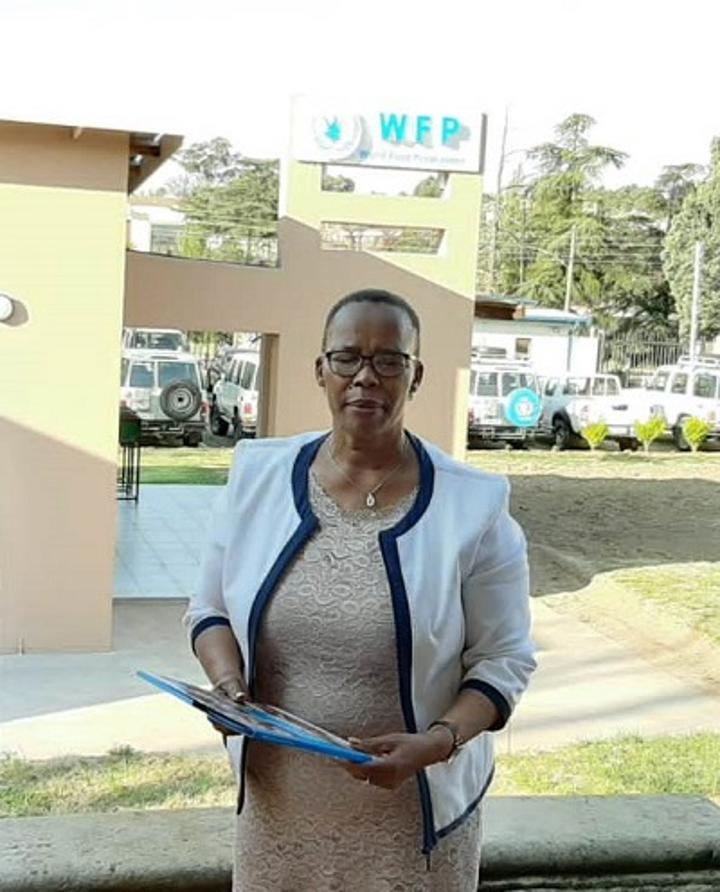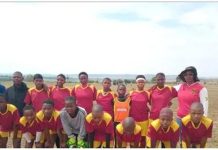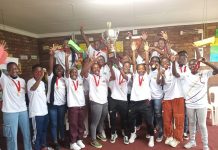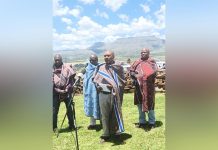Africa-Press – Lesotho. The Ministry of Education and Training (MoET) held a joined meeting with the development partners to discuss related issues on access and retention in secondary schools in Lesotho, under the
education plus initiative on Tuesday. The development partners involved in the deliberations were the United Nations Population Fund (UNFPA), United Nations Children’s Fund (UNICEF), United Nations Program on HIV/AIDS (UNAIDS)
and United Nations Educational, Scientific and Cultural Organization (UNESCO). Speaking on behalf of the Education Plus Initiative Coordinator Caroline Ngonze said this initiative was launched in
July this year in Paris during the Generation Inequality Forum. It was intended to look at the key components that are needed to keep the adolescent girls and
young women in secondary schools to reduce the rate of HIV/AIDS infection. Ngonze stated that Lesotho is one of the five countries to adopt and implement this initiative and showed that every
week in the Sub-Saharan Africa, 4,200 adolescence girls and young women are infected with HIV/AIDS and this makes up to 2/3 of new cases in Sub-Saharan
Africa. “In many of the countries in Sub-Saharan Africa adolescent girls and young women are more than twice as likely to be infected than their male counterparts, in Lesotho the data shows
that they are 3 times more likely to be infected while in Eswatini they are 5 times more and in Malawi 2.5 times more likely to be infected and the picture
is the same,” she noted. The Minister of Education and Training Hon. ‘Mamookho Phiri said according to the highlighted background of Lesotho data, all in all there are 1,459 primary schools and 350 secondary
schools scattered in 10 districts of Lesotho based on 2.2 million population. She said the enrollment statistics of learners in Mokhotlong district stands at 1,960 boys and 3,835 girls in
secondary whereas there are 10,218 boys 10,562 girls in primary schools. “There are so many barriers in these schools including Thaba-Tseka and Mokhotlong and
the adolescents in rural areas rarely make it to secondary education. School fees is one of the key barriers since primary education is free and secondary
education is costly to many parents. Households pay fees, buy uniform, stationery and pay for transport expenses at times,” Phiri stated. She further indicated that the second
barrier is that even though primary education is free, the government incurs M900.00 per learner which is equivalent to $ 56 United States Dollars (USD), at
lower secondary they pay M3, 400 equivalent to $215 USD and half of it is spend on tuition and the remaining on uniform, transport and learning materials while
in the upper secondary the cost is M4, 600 equivalent to $295 USD. “Major barrier which worries us all is pregnancy; it has also been recognized as a major culprit as it stands at 21% in secondary schools.
It is the major reason for girls to drop out from school. Adolescents from the rural areas and those from the poor households turn to start child bearing at very young age.
Studies also show that HIV/AIDS affects girls more than it does to boys and on average 13% of the young women and 6% of young men live with HIV/AIDS,” she said.
Phiri noted that HIV/AIDS incidences in young women at 1.5% was nearly 3 times that of young men of only 0.56 % in 2019. She said MoET has an education sector plan of 2016/2026 that aligns with
the National Development Strategic Plan II (NDSP) and other local and international protocols, free primary education policy that opens to all learners and nutrition policy in order to achieve in particular the Sustainable
Development Goal (SDG) 4 that requires not only an increased enrollment but also increased attendance and ability to learn, a decrease in drop outs and
improvement in the quality of inclusive education. Phiri stated that rationalization of fee policy is reaching out for less fortunate families to take their children
to school, although many parents are jobless due to Covid-19 pandemic, and facing out of primary living examination certificates in 2017 and junior certificates
in 2021 so that there is progression and for them to complete their secondary education. The policy has implemented text book rental scheme to meet parents half way for their children to access text books
at very low cost and the Lesotho education quality for equality and basic education improvement project, which also targeted schools in the hard to reach
areas to discourage absenteeism and drop out. “Infrastructure is needed for expansion of secondary education such as expansion of schools and classrooms,
staff houses including boarding in schools in the highlands areas. In the implementation of Lesotho basic education curriculum policy, the ministry has to implement the
three path way of the revised curriculum to face out a one size fits all curriculum. It is time we implement competence based curriculum and bring out
the talent and gifts that learners have,” she said. The Minister enlightened that more teachers are required at secondary level especially now when we implement the
revised curriculum that prepares learners for the professional world. “There is a need for more quality assurance officers for Mathematics, Science, English
and more subjects such as Travel and Tourism, Creativity, Economics and Entrepreneurship. The ministry has to ensure continuous professional development
for school principals and quality assurance officers and the teacher’s guides and leaning materials must be provided to all public secondary schools,” Phiri noted.
For More News And Analysis About Lesotho Follow Africa-Press






